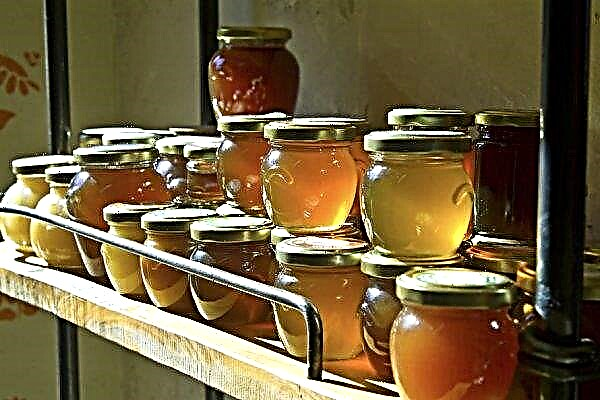It is not always possible to hire specialists to build a chicken coop, in addition, having minimal skills in working with tools, you can do it yourself, significantly saving. Therefore, this article will consider a step-by-step guide on the construction of a chicken coop and its arrangement, in creating good conditions for chickens.
How to choose a place
Before you begin designing a home for chickens, you need to choose a place where it will be located. Experienced breeders know that a not-so-pleasant smell comes from the chicken coop, so it is recommended that you build your home as far away from home as possible.
Choose a place to build a little on a hill to exclude the possibility of flooding in the rainy season. Compost pit or outdoor toilet should not be located next to the barn, this is not the norm for hygiene reasons. It is recommended to build a chicken coop in an area with large free space, since in addition to the premises, it will also be necessary to equip a place for bird walking. It is recommended to build a chicken shed on the sunny side of the plot, which is protected from drafts and wind by shrubs or trees.
It is recommended to build a chicken coop in an area with large free space, since in addition to the premises, it will also be necessary to equip a place for bird walking. It is recommended to build a chicken shed on the sunny side of the plot, which is protected from drafts and wind by shrubs or trees.
Determine the scale of construction
Depending on the number of chickens that will be kept in the erected chicken coop, the necessary dimensions of the building are calculated. For 10 individuals, a small room of 3-4 square meters will be enough. If there are more chickens, then, accordingly, the size of the chicken coop will be larger: for 20 individuals, 6 square meters will be needed, for 30 individuals - 9 square meters and so on.
Important! If a chicken coop is built for 5-10 layers, then the foundation is not required.
How to make a chicken shed yourself
To simplify the task of erecting a barn, it is necessary to break down the entire amount of work into points and consider each of them in more detail.
Foundation and flooring
The need for the foundation increases with the content in the barn of 20 individuals.
A columnar foundation is being erected for the chicken coop. To make the foundation this way, you need to:
- Dig holes: 70 cm deep and 50 cm wide.
- Crushed stone and sand are poured at the bottom of each pit, on top of which it is necessary to lay 2 bricks, fill it with cement mortar.
- Next, the brick - cement mortar is alternated until the pillars of the foundation rise above the ground to 30 cm.
- The empty space between each cabinet is covered with large gravel, which will not allow excess moisture to enter the chicken coop and protect chickens from predators.
- The foundation is left for 5 days, so that it grips well and becomes strong.
Video: the construction of the foundation and floor for the barn
Building walls
To install the frame, use a 5x10 cm edged board or a 10x10 cm timber.
- The beam is laid around the perimeter of the foundation.
- The void, which was formed as a result of the formation of the rectangle from the boards, is filled with a beam (it is installed on the edge to increase the rigidity of the structure).
- Next, the boards are knocked into the frame, which will then be used to attach the OSB sheets.
- The sheets will be attached at the end of the roof installation.
- Before attaching OSB sheets, it is necessary to mark the holes in the frame for windows and doors.
- Sheets are fixed on self-tapping screws to a frame made of timber.
Video: building walls for the barn
In order for the shed to be warm, in the voids of the frame, on the inside, it is necessary to place a heater, for example, mineral wool or polystyrene. On top of the insulation, from the inside of the chicken coop, OSB sheets are also nailed, thus smooth walls are obtained.
Roof and ceiling construction
In order to avoid difficulties in the construction of the roof, it is recommended to make it shed, while maintaining a slight slope. This happens in several stages:
- To make a tilt, several strips of timber are nailed to 1 part of the structure.
- Keeping equal intervals, attach the remaining strips of timber to the elevated part of the base and to the opposite side.
- The roof is covered with slate on top.
- Under the slate, the roof is insulated in the same way as the walls.
Video: building a roof for a barn
We make doors and windows
Doors and windows must be foreseen in advance and done not at the end of the construction of walls, but directly in the process.
- First of all, take measurements that will ensure the correct marking on the frame of the chicken coop, as well as on OSB sheets.
- Using a saw, make the necessary holes for windows and doors.
- According to the marking, make a frame.
- Beat the frame with OSB sheets.
- Fill the inside of the door with insulation.
Video: installing windows and doors in the barn
Microclimate
Not only the correct construction of the barn is very important, but also the creation of the necessary conditions for the normal life of chickens.
Ventilation
The room where the chickens will live must be well ventilated so that the bird is healthy. Ventilation in the summer is especially important in order to avoid the development of germs, parasites, timely air purification and drying of the bedding.
Typically, ventilation is a hole made in opposite walls. Such holes necessarily have valves so that it is possible to close them in the cold.
Did you know? The period of darkness for chickens is very important for the formation of bone tissue, changes in calcium metabolism, which is responsible for the density of the shell, the development of immunity.
Lighting
To illuminate the house, you can use fluorescent lamps with a capacity of at least 40 watts. For every 4 square meters of the room, one device is installed. The light source must be positioned so that there is a distance of at least 2 m from the floor.
When organizing lighting in the chicken coop, it is worth considering that in such a room there is always high humidity, so when making wiring, installing lamps and switches, it is necessary to place a shield outside the house. To prevent the chickens from being burned or getting an electric shock, a thick shade is installed on the lamps. In winter, lighting in the chicken coop allows you to stimulate the performance of laying hens, optimally if the daylight hours are extended to 13 hours a day. Be sure to turn on the lights early in the morning, and in the evening, when it gets dark outside, the light should be on in the chicken coop for at least another 3 hours.
In winter, lighting in the chicken coop allows you to stimulate the performance of laying hens, optimally if the daylight hours are extended to 13 hours a day. Be sure to turn on the lights early in the morning, and in the evening, when it gets dark outside, the light should be on in the chicken coop for at least another 3 hours.
In order not to get up very early every morning, and not to visit the chicken house in the late evening, it is recommended to set a timer that will control the periods when the light is turned on in the house independently.
Find out what lighting should be in the chicken coop.
Temperature + how to insulate for the winter
Hens are resistant to temperature extremes, so the air temperature in the room can be in the range +5 ... + 23 ° С. With an increase in air temperature in the chicken coop, the bird will not feel comfortable when the value goes over +30 degrees, the chicken may stop flying, the chickens become vulnerable to infectious and parasitic diseases. If in winter, the air temperature in the chicken coop drops below +5 degrees, the room should be insulated. To warm the shed, a thick layer of litter (straw, sawdust) is poured onto the floor. Initially, natural material is scattered on the floor with a thickness of 10 cm, then, as it sags, pour 2 more times, increasing the number of embankments to 20 cm.
If in winter, the air temperature in the chicken coop drops below +5 degrees, the room should be insulated. To warm the shed, a thick layer of litter (straw, sawdust) is poured onto the floor. Initially, natural material is scattered on the floor with a thickness of 10 cm, then, as it sags, pour 2 more times, increasing the number of embankments to 20 cm.
Home Furnishing
After completion of the preparatory work, it is necessary to proceed with the arrangement of the chicken coop.
Perches
The most important element in the chicken coop is perches. The number and length of roosts must be selected based on the number of birds that will live in the chicken coop. For each individual, it is necessary to allocate 20-30 cm of free space. To save space, roosts can be installed not in one, but in several rows. The lower pole should not be too close to the floor, the optimal height is 80 cm.
To save space, roosts can be installed not in one, but in several rows. The lower pole should not be too close to the floor, the optimal height is 80 cm.
Nests
It is necessary to equip nests for hens in the darkened parts of the chicken coop. They are installed at a height of 60 cm from the floor. Nests are best made from plywood. For every 3 laying hens make one nest.
Did you know? Chickens do not divide eggs into friends and foes, so they hatch everything that is in the nest, while they can distinguish which egg has deteriorated and independently push it out of the nest.
Feeding troughs and drinking bowls
Tanks for food and water are placed away from perches, so that bird droppings do not get into them. Feeders are installed on the floor or suspended. Often, for hens, feeders are made independently from 2 cm thick boards. The feeder should be of sufficient length and width so that all hens can take food at the same time.
For 10 chickens, it will be enough to make a feeder 60 cm long and 20 cm wide, the side height is 10 cm. Also, a feeder with several compartments for mineral additives (gravel, chalk, shells) is also separately made. Green feed is poured into special mesh buckets that are hung on a hook against the wall. It is best to use cans with a capacity of 1 liter, which you need to install on special supports, with a height of 50 cm. Thus, the free area that forms around the drinker makes it possible for chickens to drink water without filling the litter.
It is best to use cans with a capacity of 1 liter, which you need to install on special supports, with a height of 50 cm. Thus, the free area that forms around the drinker makes it possible for chickens to drink water without filling the litter.
Capacity for ash baths
Ash baths are necessary for chickens to clean feathers from pests. As a filler for such baths, river sand or wood ash is suitable.
Important! Fresh wood ash is not suitable for bathing, as it contains substances harmful to chickens. To reduce the concentration of harmful substances in the ash and make it suitable for use, the material is left for 3 months in a dry room.
An ash bath should be installed in the chicken coop during the period of cold weather, and with the onset of heat it is taken out of the house, under a canopy, to protect the tank from precipitation.
Any container with a depth of not more than 10 cm is suitable as an ash bath. You can also make it yourself, in the form of a wooden box. The ash container should be large enough so that each individual has a free space of 30x40 cm in size. For swimming, hens make a mixture of 1 part sand and 1 part ash - when placing the tank on the street. If the bath is placed in the chicken coop, the amount of ash is reduced (a large amount of dust from the ash) and a mixture is prepared: 2 parts of sand and 1 part of ash.
For swimming, hens make a mixture of 1 part sand and 1 part ash - when placing the tank on the street. If the bath is placed in the chicken coop, the amount of ash is reduced (a large amount of dust from the ash) and a mixture is prepared: 2 parts of sand and 1 part of ash.
Walking area
The walking area must be connected to the shed so that the chickens can freely get from the closed to the open space. To do this, a small window is made in the barn at the bottom of the wall, through which the hens get out.
The walking area should be large enough so that the chickens can freely walk and be active. The area for walking should be at least 2 or 3 times larger than the barn.
It is better to enclose it with a fine net, the lower part of which, for safety reasons and to protect chickens from predators, should be dug into the ground by 10-15 cm. The upper part of the area is also tightened with netting (also for safety reasons). Thus, building a chicken coop with your own hands is not so difficult, the main thing is to follow the basic recommendations for the construction. To make the chickens in the room feel comfortable and healthy, it is important to properly equip the chicken coop and observe a special microclimate in the room.
Thus, building a chicken coop with your own hands is not so difficult, the main thing is to follow the basic recommendations for the construction. To make the chickens in the room feel comfortable and healthy, it is important to properly equip the chicken coop and observe a special microclimate in the room.












